- B-Stock Polish Pottery – Sorted & Unique
- Bowls
- Butter Dishes
- Mugs
- Plates
- More
- Jars

- Outlet

- Baking Dishes made of Boleslawiec Pottery

- Polish Pottery Platters – Wide Selection of Shapes & Sizes
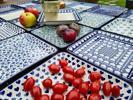
- Jugs & Pitchers – Wine, Water, Juice, Milk – Polish Pottery

- Wintry

- Decoration

- Teapots & Coffee Pots in Bolesławiec Polish Pottery

- Artists

- Faith – Christianity – Polish Pottery

- 1000 and a cup

- Custom made

- Exclusive Polish Pottery

- Gift Voucher for Polish Pottery – Give Handcrafted Quality

- Over 4600 Polish Pottery Patterns

- Unique pieces Polish pottery

- Polish Pottery Sets & Second Choice – Beauty at a Great Price

- Saucier – Cooking with Polish Stoneware

- Soup Kitchen – Polish Pottery

- Complete service

- Exhibition Room

- Bathroom & WC – Polish Pottery by Ceramika Artystyczna

- Pizza Baking – Polish Pottery

- Vases in Polish Pottery – Ceramika Artystyczna

- Chef Pâtissier – Sweet and Savoury – in, on and with Polish Pottery

- Garde-Manger – Cooking with Polish Pottery Tableware

- Plongeur – Cleaning Polish Pottery Tableware

- Rôtisseur – Cooking with Polish Pottery

- Polish Pottery Sets at Discount Prices

- For the Danish Kitchen – Ceramic Tableware

- Grillardin – Grilling, Smoking & Barbecue with Polish Pottery

- Bulk Discount – Save on Polish Pottery
- Customer Service & FAQs – Polish Pottery
- Sweet Dreams

- For the German Kitchen – Polish Pottery Tableware

- The History of Polish Pottery
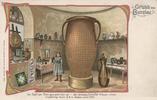
- For the Polish Kitchen – Polish Pottery

- For the Spanish Kitchen – Polish Pottery

- Ceramika Artystyczna - The Queen of Polish Pottery Ceramics

- Dishes for lovers

- Polish pottery gallery

- Sustainability

- Polish Ceramics from Ceramika Manufaktura

- Breakage-Free Guarantee – Safe Delivery of Your Polish Pottery
- Polish Pottery – Safe, Food-Safe & Everyday-Ready
- Reorder Guarantee – Your design available for many years
- Cookbook – Recipes and Cooking with Polish Pottery by Gourmet Chef Christian Kindervater

- Special Shipping Requests

- Gift Wrapping – Polish Pottery
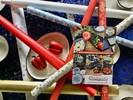
- Trusted Shops Buyer Protection – Excellent Shop – Certified for 17 years (since 15/05/2008) – Bunzlauergrosshandel.de

- Jars
Pizza Dough Preparation – Bowls Made of Bolesławiec Pottery
Creating the perfect pizza dough doesn’t just start with high-quality ingredients – it begins with the right tools. Our large ceramic bowls, handmade in the traditional Bolesławiec region by the acclaimed Ceramika Artystyczna, offer the ideal shape and size for kneading, resting, and rising dough. These artisan bowls are not only functional and oven-safe but also visually stunning, adding a touch of Polish tradition and craftsmanship to any kitchen.
The high-quality glaze makes them food-safe, easy to clean, and excellent for cold fermentation of yeast doughs. Whether you’re an aspiring pizzaiolo or a passionate home chef, these bowls support you in every stage of the dough-making process.
Becoming a Professional Pizza Maker – What You Learn
Pizza-making is a craft that blends skill, science, and passion. Specialized training programs for pizzaioli (pizza makers), often based on traditional Italian techniques, offer both theoretical education and hands-on practice.
Theoretical Curriculum Includes:
Dough structure and gluten development
Understanding flour types (Tipo 00, Type 550, etc.)
Fermentation theory and cold-proofing
Temperature management (dough, water, and oven)
Food hygiene and HACCP standards
Recipe formulation and ingredient costing
Food Science Knowledge:
Properties of high-quality salt (e.g., Fleur de Sel)
The function of fats like cold-pressed olive oil in dough
Different yeast types (fresh, dry, sourdough)
The role of water and hydration percentages
Regional ingredient variations (Neapolitan vs. Roman pizza)
Recipe: Authentic Pizza Dough (Yields approx. 1 kg of dough – 3–4 pizzas)
Ingredients:
600 g high-quality pizza flour (Tipo 00 or Type 550 wheat flour)
380 ml cold water
15 g Fleur de Sel
3 g fresh yeast (or 1 g dry yeast)
20 ml cold-pressed extra virgin olive oil
Instructions:
Dissolve the yeast in cold water. Do not add salt at this stage.
Place the flour into a large ceramic bowl and create a well in the center.
Slowly pour in the yeast water, mixing with your hand or a wooden spoon.
Once a rough dough forms, add the salt and olive oil.
Knead the dough thoroughly for 8–10 minutes until smooth and elastic.
Cover the bowl and let the dough rest in the refrigerator for 24 hours.
Remove from the fridge and allow to come to room temperature 2 hours before use.
The result is a dough with excellent elasticity, a flavorful crumb, and a crispy crust – exactly what you expect from authentic Italian pizza.






















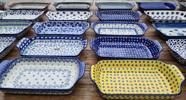


















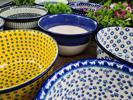
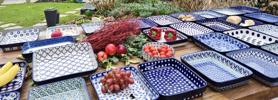













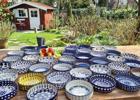










































 Plenty Lions
Plenty Lions